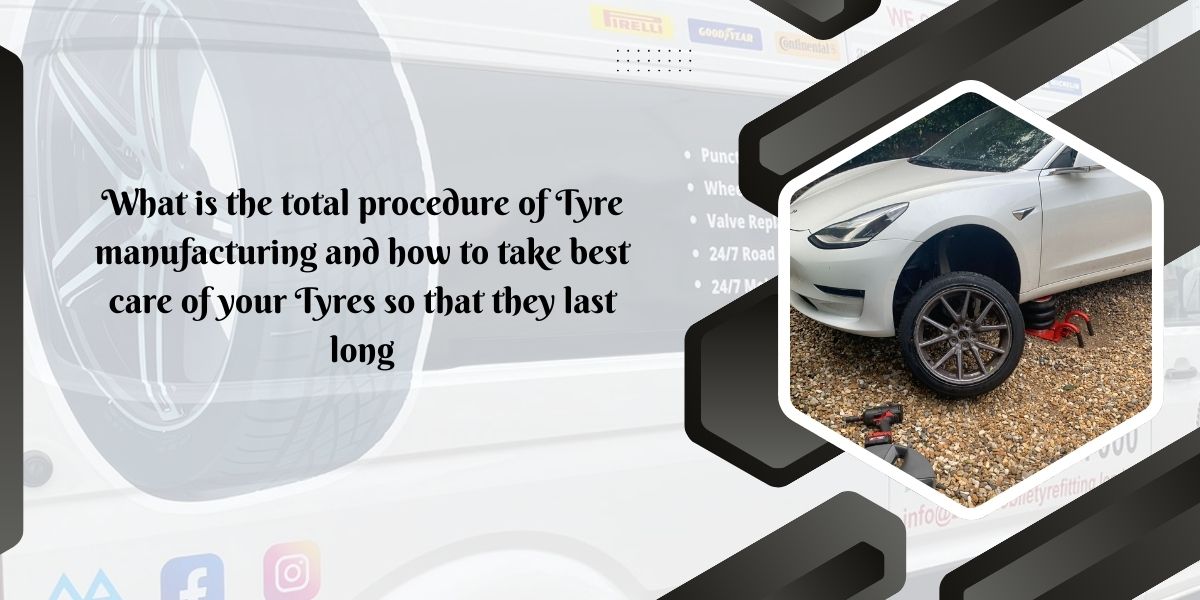Tyres are applied on wheels to help automobiles move better. In earlier days (long ago when horse was the chief mode of land transport), the wheels used to be covered by just leather or iron coverings to provide a smoother ride and prevent their faster erosion. Pneumatic tyres (air filled tyres which we use now a days) revolutionized that and made transportation different.
Further revolution was brought by Henry ford. Though it was Karl Bens, the German engineer who made the first practical internal combustion engine car, the real revolution was brought by Henry Ford. His Model-T made cars a household thing and made horse drawn carriage obsolete. There is a famous picture of New York City in 1910 where there was one car and lots of horse drawn carriages. A picture after ten years showed only one horse, all the rest, cars.
Read also: https://todaybloggingworld.com/dental-crowns-here-is-what-you-should-know-before-getting-one/
In this journey of cars, tyres have been a worthy companion. Starting with wood fiber ply, now we use steel as ply. Bias tyres are practically extinct (except for heavy specialty usage) and we use radial tyres now. Tubeless tyres, snow tyres, so many technologies have advanced this industry! Who knows in future we might have airless tyres!
Technological advances change the world overnight. It took just ten years to go from full horse to full car. Revolution in petroleum industry and electricity threw out whaling out of the box quick. May be driverless cars will dominate the roads within a decade (Neil deGrasse Tyson thinks so). Maybe we will have airless tyres. But it looks like, whatever the case, tyres in one form or the other, are going to stay. The creation of Dunlop and Thomson, both from Scotland in the 19th century are here to stay (by the way they made tyres, though independently and separated by almost half a century).
How are tyres made
There are many large multinational corporations that manufacture world class tyres. Michelin, the French company and Goodyear, the American brand are very trustworthy names in the industry. There are so many others. Tyres are made by these large multinationals in a very sophisticated and assembly line-oriented manner, but the basic technical steps are overwhelmingly similar for all.
Raw materials
The first step is to gather raw materials. Tyre needs various raw materials. Rubber is the chief one. Synthetic as well as natural rubber is used. Natural rubber is necessary in those conditions specially where heat resistance is needed, as in truck tyres. Also, natural rubber is being encouraged in some places now due to environmental concerns.
Other materials are also needed like sulfur, different other chemicals, carbon black, different fabric chords, and importantly steel. Steel provides the tyre strength. Weight bearing capacity of the tyre has a lot to do with steel.
Like in concrete, in tyre too, steel provides strength. It helps prevent puncture. Imagine you are driving in Watford and you suddenly run on a nail and have a flat tyre? Well, steel protects against that to a large extent. However, there are tyre fitting Watford provides that can fix your problem.
Mixing
In this step, different raw materials are mixed in appropriate percentage in a specific manner. Big internal mixing machines are used to do this. After that the mixture is generally rolled into sheets for manufacturing tyres.
Building
Tyres are then built with the mixture. The building proceeds from inside to outside.
Assembly
Machines (Tyre building drum) are used for this procedure. All the tyre components are assembled in this step.
Vulcanization
Here the unfinished tyre is heated and concretized into a robust final structure. Markings are made in this phase. This is the final phase in production. After this the product is called a finished tyre.
Inspection
Tyre is checked in this step for different irregularities, if any. Different machines like Uniformity Testing Machines are used. Some companies also use X-Ray to check perfection and accuracy. Artificial Intelligence (AI) is becoming a promising thing in inspection and quality control.
What are the steps you can take for longer tyre life
Tyres, however you might care them, will not last forever. However, a couple of steps help increase their life.
Rotating
As vehicles move, tyres erode in a specific fashion. If you rotate the tyres, the erosion is distributed and that helps increase the life.
Alignment
Wheels are aligned at specific angles with car. When that angle gets deviated from original, the tyres erode more. This takes life off tyres. So proper wheel balancing is important for decreasing erosion and giving tyre longer life. Bad wheel alignment is also a safety concern, gives lower mileage, makes ride and drive uncomfortable. There are Watford tyres shops that will help you get ideal wheel alignment.
Pressure
Too low or too high pressure is bad for tyres. Tyres give longer life if driven under optimum pressure.
Life
Car tyres Watford or any other place provide, is not everlasting and have a life, measured in terms of distance. It is better to replace them on so. Also, if tyre tread has eroded too much (ask your mechanic the adequate percentage for your tyre and car), it is better to replace so because it is a safety concern. Even if there is life remaining in distance and tread, much old become unusable, brittle and as a result, unsafe for use. It is better to replace such a tyre. Search Mobile tyres in Watford for finding a good mechanic for tyre replacement.
Final Words
It is unwise to drive a tyre too old or beyond its natural life. It is a safety concern. Search tyres near Watford or any such generic phrases to find a mechanic to replace your tyre at the ideal time.
